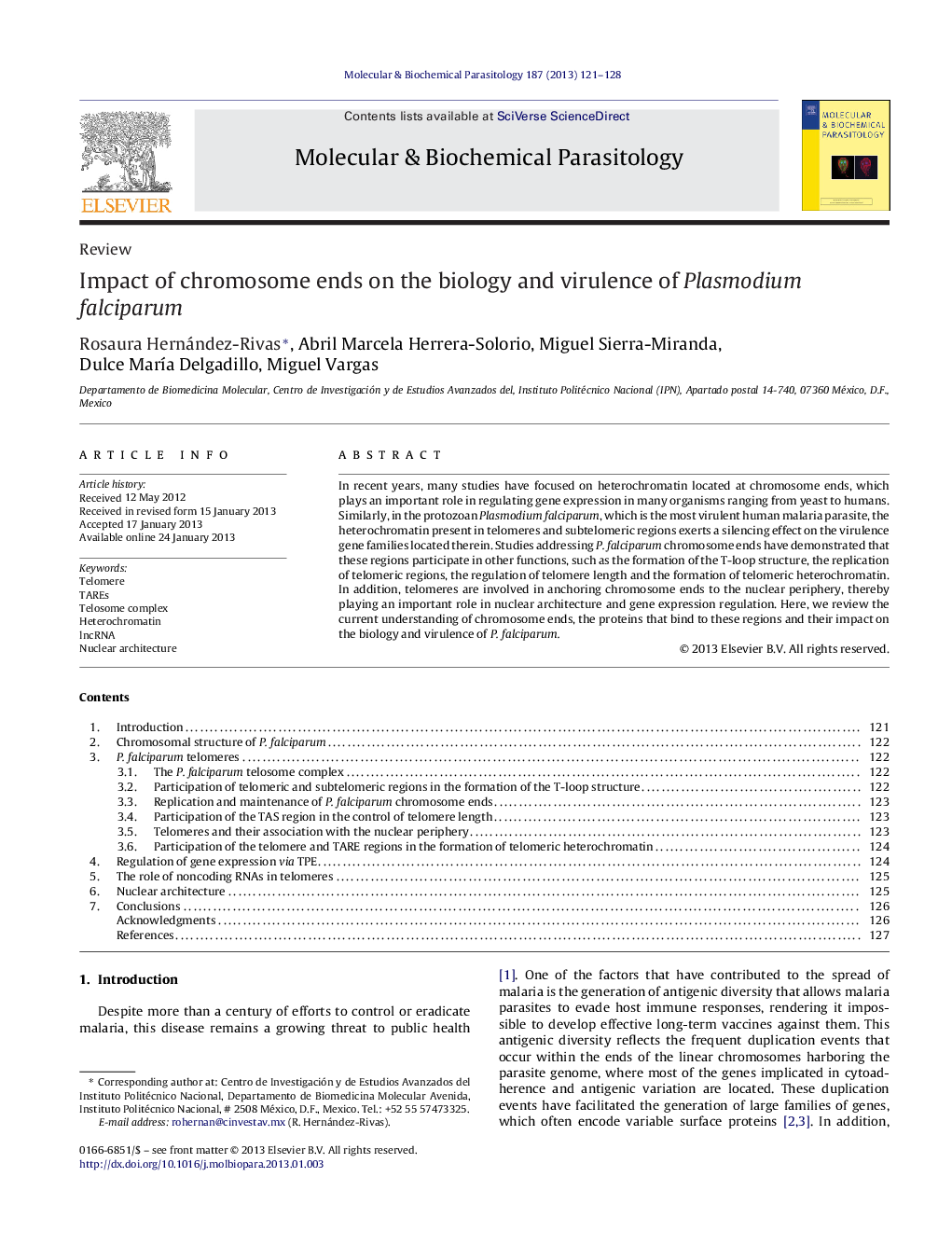| کد مقاله | کد نشریه | سال انتشار | مقاله انگلیسی | نسخه تمام متن |
|---|---|---|---|---|
| 5915491 | 1163301 | 2013 | 8 صفحه PDF | دانلود رایگان |
In recent years, many studies have focused on heterochromatin located at chromosome ends, which plays an important role in regulating gene expression in many organisms ranging from yeast to humans. Similarly, in the protozoan Plasmodium falciparum, which is the most virulent human malaria parasite, the heterochromatin present in telomeres and subtelomeric regions exerts a silencing effect on the virulence gene families located therein. Studies addressing P. falciparum chromosome ends have demonstrated that these regions participate in other functions, such as the formation of the T-loop structure, the replication of telomeric regions, the regulation of telomere length and the formation of telomeric heterochromatin. In addition, telomeres are involved in anchoring chromosome ends to the nuclear periphery, thereby playing an important role in nuclear architecture and gene expression regulation. Here, we review the current understanding of chromosome ends, the proteins that bind to these regions and their impact on the biology and virulence of P. falciparum.
122Highlights⺠Chromosomal structure of P. falciparum. ⺠The telosome complex in P. falciparum. ⺠The role of chromosome ends in the nuclear architecture in Plasmodium.
Journal: Molecular and Biochemical Parasitology - Volume 187, Issue 2, February 2013, Pages 121-128
